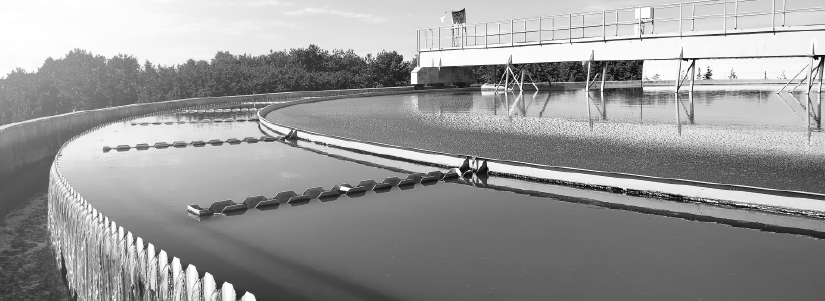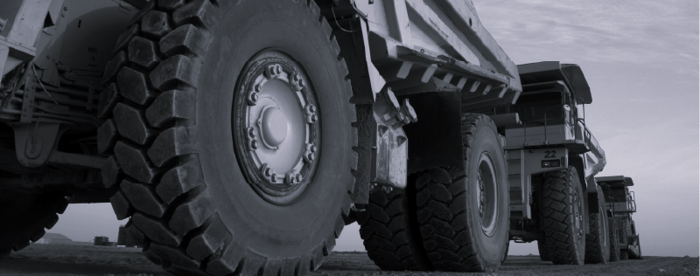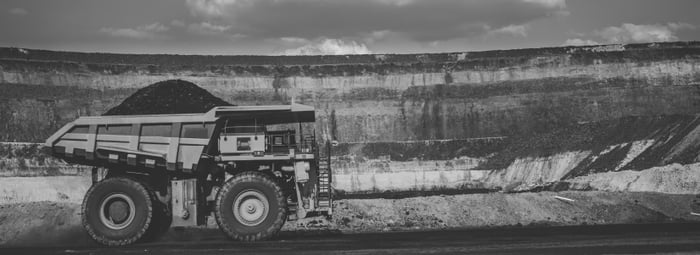Wastewater Treatment- Mining
Tips & Tricks • 4 min read • April 25, 2024 • Written by: Natasha Osborne

In this week’s blog we’ll be exploring the processes involved in wastewater treatment and how it is used in the mining industry to remove harmful toxins and materials from the waste produced from mining activities.
What is it?
As the mining industry requires an extremely large volume of water, which places a considerable amount of stress on the environment, it is important to reuse the water where possible. Mining wastewater is the process of treating wastewater produced in mining operations, to ensure that it meets the environmental standards before it is reused or released into the local area. Water is used in multiple processes throughout the mining process and during this time, it is contaminated with chemicals and solids that requires treatment to remove these impurities.
Wastewater is produced at a mine site and is known as tailings. Wastewater contains a mixture of waste from the extraction and refining processes, also known as a slurry. The waste typically includes debris, chemicals, and water, that are stored in tailing dams or ponds. If the materials in tailings ponds are not treated properly this can lead to a build-up of toxic materials and can be harmful to the environment.
The Process
The objective for water treatment is to remove the contaminants that are in the water, including metals and other materials to restore the water to its optimal pH levels. To achieve this a variety of chemicals and filtration processes must take place, including sedimentation, filtration, chemical precipitation, and biological treatment. These processes help to remove solids, pollutants, and heavy metals from the water, to make it safe for reuse or disposal. If this waste is left untreated it raises the concentration of metal in the water and increases the risk of erosion, leaching and acid mine drainage.
Mining operations can choose to outsource the treatment to a third-party company, where tankers collect the sludge or wastewater and process it off site, but this is a costly process. Having retention ponds on-site and treating the wastewater using specialist filtration or treatment chemicals or both, is a more affordable option.
How it works
There are different methods that can be undertaken to treat the water. The primary focus is to restore the pH levels and remove the unwanted metals and chemicals.
- pH Adjusters- This returns the water to a balanced pH level.
- Coagulants and Flocculants- This groups the metals together and makes it easier to filter out.
- Additional Chemicals- Water softeners, ion exchangers, corrosion inhibitors, algaecides and biocides can all be used in addition of pH adjusters and coagulants and flocculants to treat the wastewater.
- Filtration- The main types of filtrations include centrifuges, filter presses and belt presses.
Methods of Dewatering Mining Wastewater
Hydro clones- built around centrifugal forces to remove solids from the water. While they can remove a significant volume of solids, a high-efficiency filter press is required to remove the remaining solids.
Belt Filters- commonly used for mechanical dewatering to keep costs low. They work by dewatering a slurry, with two moving belts held under tension. As the water turns over and under a series of rollers it produces a clump of solids, making it easier to remove. It can become expensive due to the chemical flocculants required and if the belt needs replacing.
Filter Presses- This option offers the most efficient and cost-effective process. A pump pushes a slurry through the devices chamber’s, made up of filter plates that remove the solids from the wastewater, producing clean water in return.
Benefits of Filtration and Wastewater Treatment Chemicals
The main benefit of wastewater treatment is cleaning dirty water into reusable water. By removing the toxins, it provides clean and safe water. It also offers the following:
- The opportunity to reuse water.
- More cost effective.
- Improved environmental impact.
- Meeting regulatory requirements to avoid fines.
- Reducing the release of harmful chemicals.
- Increased efficiency and sustainability.
The implementation of wastewater treatments reduces the harmful chemicals and pollutants released into the environment. By cleaning the water, it can be safely released into the environment or even be reused in the mining process. These systems also ensure companies meet regulatory requirements and avoid fines. This benefits the environment and maintains reputation for taking care of waste in a professional manner.
Local communities, ecosystems and wildlife benefit from mining operations following responsible practices. It can help to build trust between locals and the mining industry. Investors and stakeholders are more likely to view your operations in a favourable manner, which can increase financial support and business opportunities.
The process also increases the efficiency and sustainability of the mine sites operations. Treating and reusing water means companies can reduce their reliance on freshwater sources, which helps to limit the pressure on the local water resources. It also can limit the amount of water that needs to be transported to site, which helps to reduce emissions and improve sustainability.
Why should you treat wastewater from mines?
Wastewater treatment is a beneficial process to both mine site operations and the environment, it ensures that water is preserved, and water pollution doesn’t harm the local area. Choosing to not treat wastewater from mining activity can have a huge impact on mine efficiency, as it is often very acidic. By investing in these systems, it is proven to be beneficial to boosting productivity and makes operations more efficient.
We hope you found this week’s blog interesting and learnt something new! Be sure to leave a comment below to let us know your thoughts and feel free to suggest any topics you’d like to read about in the future. If you did like what you read, make sure that you are subscribed to our newsletter and have our blogs delivered straight to your inbox.
Related Articles

Business News
Business Trips- March

Industry Insights
The Future of Mining Machinery: Growth, Technology, and Procurement

Tips & Tricks
Worker Safety- Keeping Cool on Site
Don't Miss Out On Our Updates
Sign up and Join Our Newsletter Today
